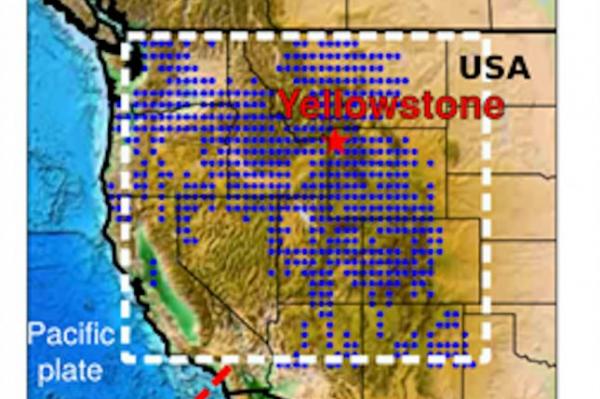
Feb. 13 (UPI) — Roughly 350 kilometers, or 217 miles, beneath the surface of the Western United States, lies a newly discovered mass of melting carbon. Researchers found the region of melting carbon using the world’s largest array of seismometers. The molten belt stretches across 1.8 million square kilometers, or 695,000 square miles.
As carbonates melt deep beneath Earth’s surface, they produce unique seismic patterns, which can be measured by the array of seismic sensors. The images yield a map of Earth’s upper mantle.
“It would be impossible for us to drill far enough down to physically ‘see’ the Earth’s mantle, so using this massive group of sensors we have to paint a picture of it using mathematical equations to interpret what is beneath us,” Sash Hier-Majumder, a geologist at Royal Holloway, University of London, said in a news release.
Researchers say the reservoir of melted carbon is produced by the subduction of Pacific plates beneath the Western United States. As rocks are pushed beneath the continent they are partially melted by the intense heat and pressure of the mantle.
The latest seismic analysis — detailed in the journal Earth and Planetary Science Letters — helped scientists more accurately estimate the amount of carbon trapped in Earth’s upper mantle. Scientists suggest there’s as much as 100 trillion metric tons of CO2 stored there.
“We might not think of the deep structure of the Earth as linked to climate change above us, but this discovery not only has implications for subterranean mapping but also for our future atmosphere,” said Hier-Majumder. “For example, releasing only 1 percent of this CO2 into the atmosphere will be the equivalent of burning 2.3 trillion barrels of oil. The existence of such deep reservoirs show how important is the role of deep Earth in the global carbon cycle.”





